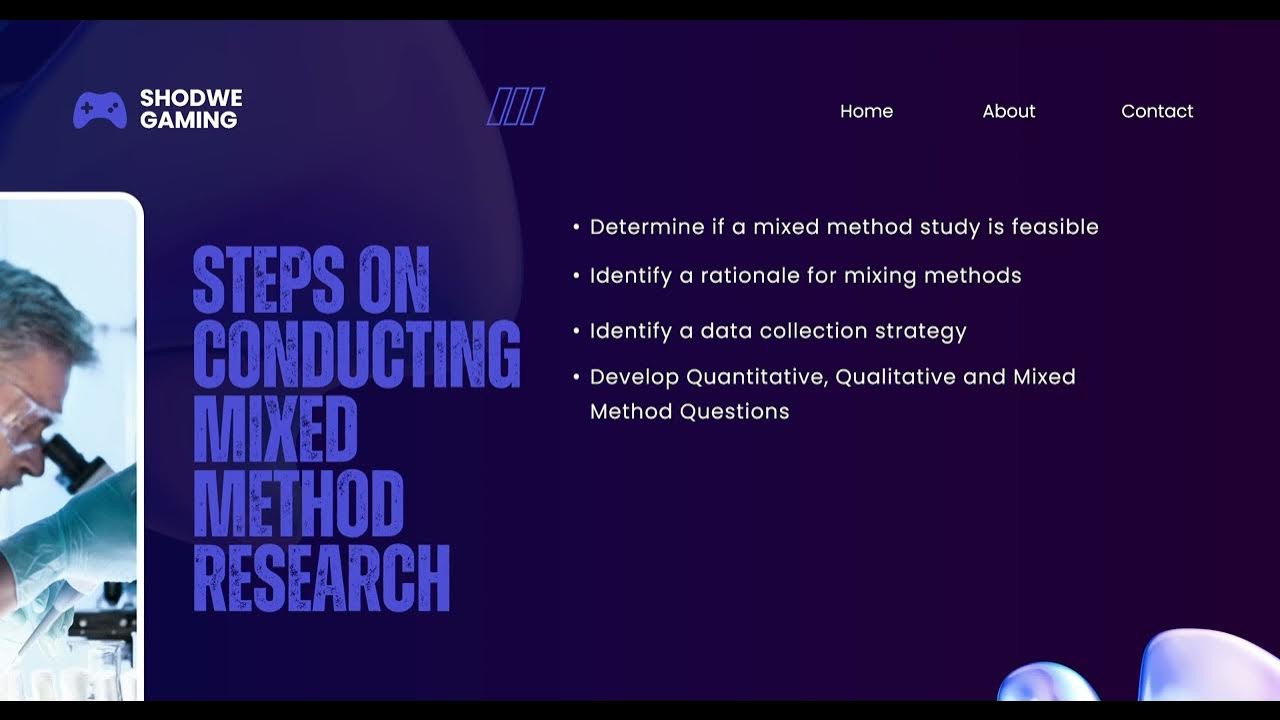When to Use Which UX Research Method
Summary
TLDRThe video discusses key criteria for selecting UX research methods, emphasizing the importance of distinguishing between behavioral and attitudinal data. It highlights when to use quantitative methods, such as usability tests and surveys, versus qualitative approaches, like field studies and diary studies. Additionally, the context of research—whether in the user’s environment or a controlled lab setting—is examined, guiding researchers on the appropriate methodologies to gather meaningful insights. Ultimately, the video serves as a practical guide to effectively enhance user experience through informed design decisions.
Takeaways
- 👀 Observational methods are best for understanding user behaviors and usability, making usability tests essential in the early design phases.
- 📊 Self-reported methods like interviews and surveys are effective for gathering users' opinions and preferences about designs.
- 🔢 Quantitative research is suitable for comparing designs, benchmarking, and calculating expected outcomes, requiring larger sample sizes for statistical significance.
- 💡 Qualitative research allows for quick insights and iterative design improvements, starting with just a couple of target users for early prototypes.
- 📝 Early design phases can benefit from field studies to understand how users interact with their environments, even without a tangible product.
- ⏳ Longitudinal studies, such as diary studies or video journals, provide insights into user behavior over time.
- 🏡 Contextual studies can be conducted in the user's natural environment through field studies or remote usability tests.
- 🔍 Live intercept studies can capture user reactions in real-time in casual settings, while lab studies offer controlled environments for deeper insights.
- 📈 Methods like card sorting, tree testing, and eye tracking have specific user count requirements, guiding research planning effectively.
- 🔄 Iterative testing is crucial; make changes based on observations and retest to refine the design continuously.
Q & A
What is the first criterion to consider when choosing a UX research method?
-The first criterion is whether to observe behavior or ask users for self-reported data.
When should you use usability tests?
-Usability tests should be used when your research question pertains to what people actually do or if something is discoverable, findable, understandable, or usable.
How can you test very early design concepts?
-You can test very early design concepts by giving users tasks to complete with low-fidelity paper sketches.
What are quantitative research methods suitable for?
-Quantitative research methods are suitable for comparing products or designs, establishing benchmarks, and calculating expected cost savings from design changes.
What quantitative methods require a specific number of users?
-Methods like card sorting require about 20 users, tree testing requires 50 to 100 users, and quantitative usability tests typically start with around 20 users, increasing based on desired confidence intervals.
What is the purpose of qualitative research in UX?
-Qualitative research is used to quickly and cost-effectively learn about user interactions and improve designs before release.
What types of studies can be conducted to understand user behavior over time?
-Longitudinal studies, such as diary studies, series of surveys, or video journals, can be conducted to understand user behavior over time.
What is the significance of context in UX research?
-Context is significant because it provides situational data about users' behaviors and interactions in their natural environments.
When should field studies be conducted?
-Field studies should be conducted when there is no design at all, especially in very early design phases, to learn how people work and live.
What are the benefits of conducting lab studies?
-Lab studies allow researchers to gather data in a controlled environment, maximizing the efficiency and effectiveness of user interactions during testing.
Outlines

Этот раздел доступен только подписчикам платных тарифов. Пожалуйста, перейдите на платный тариф для доступа.
Перейти на платный тарифMindmap

Этот раздел доступен только подписчикам платных тарифов. Пожалуйста, перейдите на платный тариф для доступа.
Перейти на платный тарифKeywords

Этот раздел доступен только подписчикам платных тарифов. Пожалуйста, перейдите на платный тариф для доступа.
Перейти на платный тарифHighlights

Этот раздел доступен только подписчикам платных тарифов. Пожалуйста, перейдите на платный тариф для доступа.
Перейти на платный тарифTranscripts

Этот раздел доступен только подписчикам платных тарифов. Пожалуйста, перейдите на платный тариф для доступа.
Перейти на платный тариф5.0 / 5 (0 votes)






